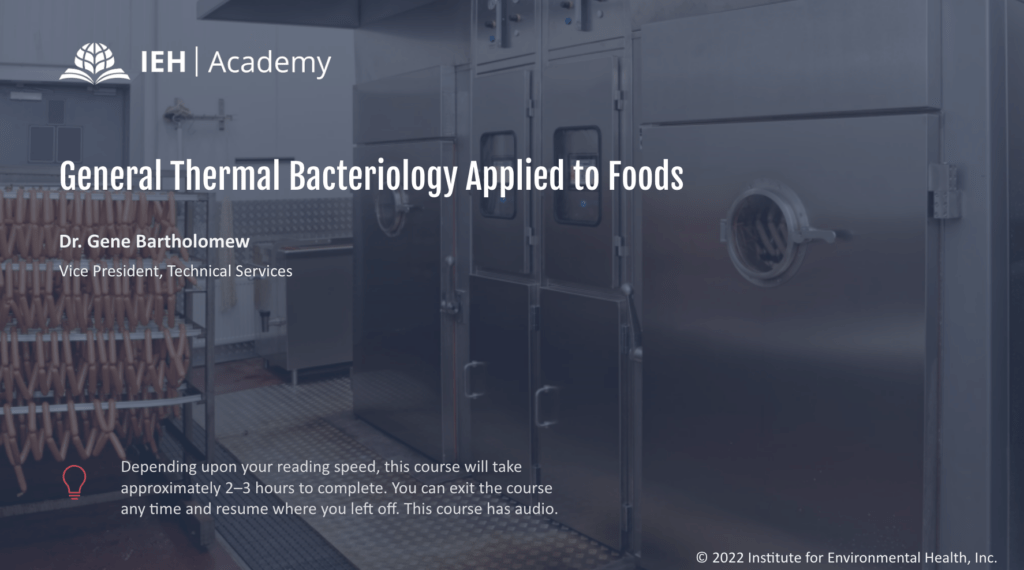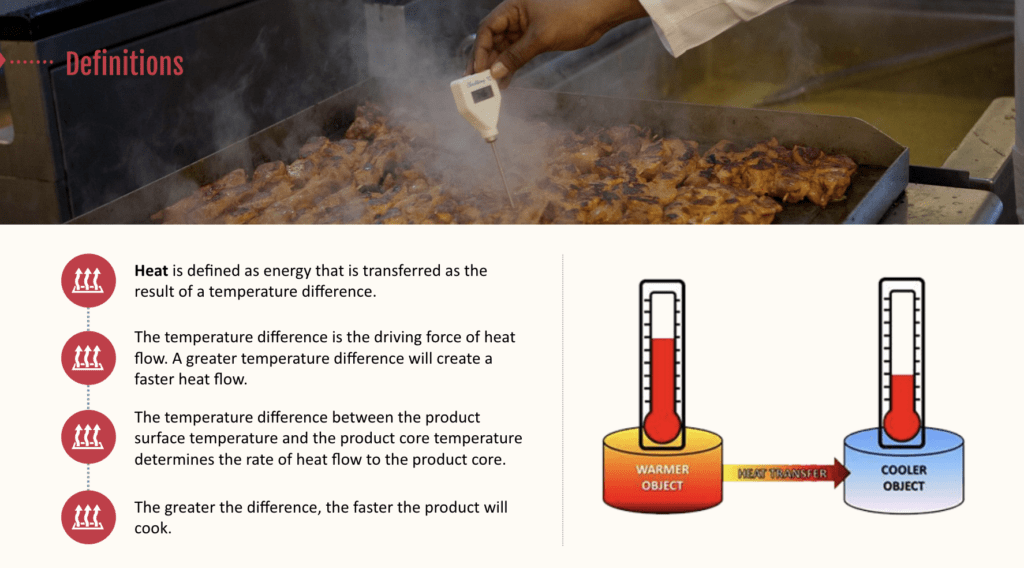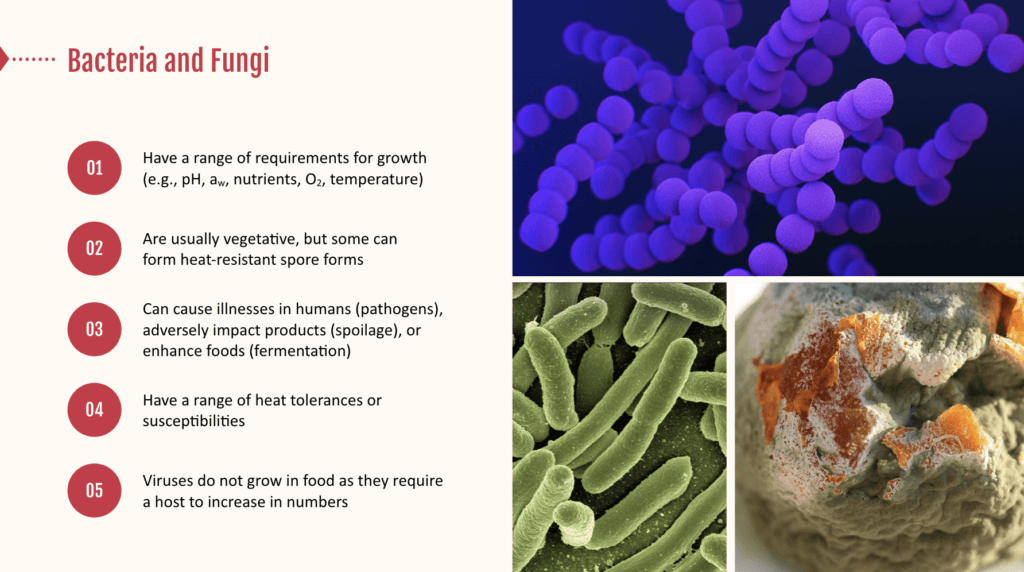Pathogens are responsible for a large number of foodborne illnesses and deaths in the U.S. every year. Many of these infections come from foods that are considered fully cooked. Food producers need to understand how thermal processing removes pathogens from products and what steps are necessary to ensure a successful heat treatment.
This training material describes the types of heating and heat transfer in foods, characteristics of microorganisms that are important to understand for effective elimination by a cook step, how best to monitor the cook process to know and document the amount of heat being delivered to a food, and how to use this heat information to predict the level of pathogen elimination by exposure to heat. We will cover the importance of collecting and documenting this information so it can be used to support product release. We will also discuss how product chilling after cook steps control growth of spores that can survive normal thermal processing procedures, and how microbial toxins can form before the cook step.




To register for this course, please visit our training portal.
